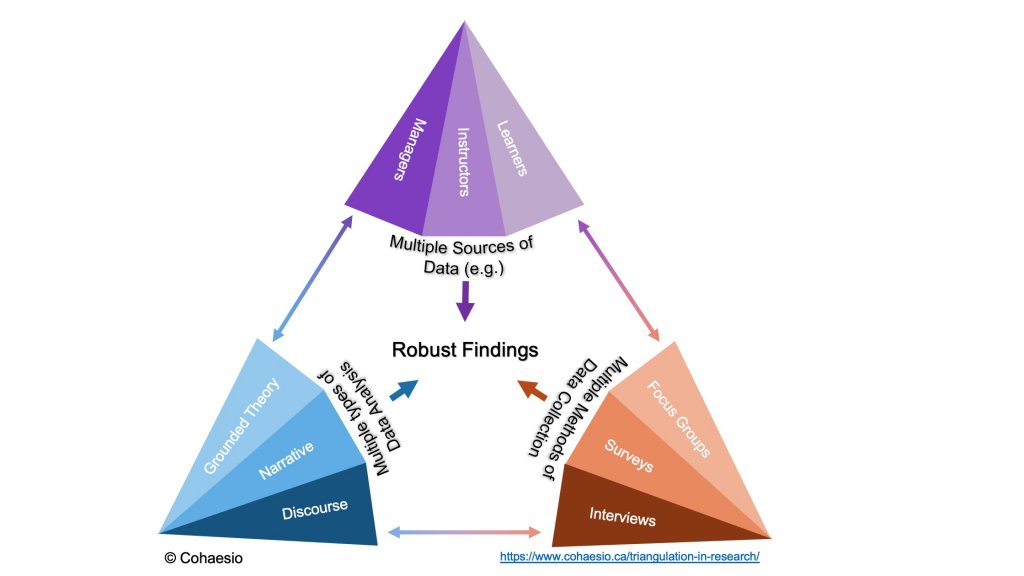Polycarbonate Sheets Market Size & CAGR
The Global Polycarbonate Sheets Market size was valued at USD 1.5 billion in 2023, and it is expected to reach USD 2.8 billion by 2030, growing at a CAGR of 8.5% during the forecast period. The market growth can be attributed to the increasing demand for lightweight and durable materials in various industries such as automotive, construction, electronics, and packaging. The forecast growth rate from 2023 to 2030 is driven by the rising adoption of polycarbonate sheets due to their superior properties such as high impact resistance, optical clarity, UV protection, and flame retardancy. Additionally, the growing awareness regarding environmental sustainability and recyclability of polycarbonate sheets is further driving market growth.
COVID-19 Impact on the Polycarbonate Sheets Market
The COVID-19 pandemic had a significant impact on the Polycarbonate Sheets Market. The global supply chain disruptions, lockdown measures, and reduced economic activities resulted in a temporary slowdown in market growth. The construction and automotive industries, which are major consumers of polycarbonate sheets, were heavily affected by the pandemic-induced restrictions. However, as the economies are gradually recovering, the demand for polycarbonate sheets is expected to bounce back. The market players are focusing on innovating products to meet the changing consumer preferences post-pandemic, such as antimicrobial polycarbonate sheets for healthcare facilities and touchless interfaces for electronics applications.
Polycarbonate Sheets Market Dynamics
Driver: Sustainability and Recyclability
One of the key drivers of the Polycarbonate Sheets Market is the increasing emphasis on sustainability and recyclability. Polycarbonate sheets are known for their recyclable properties, making them an environmentally friendly choice for various applications. With the growing awareness about climate change and environmental conservation, consumers are preferring products that are eco-friendly and can be easily recycled. This trend is driving the demand for polycarbonate sheets in industries such as construction, automotive, and consumer electronics.
Restraint: Fluctuating Raw Material Prices
One of the major restraints for the Polycarbonate Sheets Market is the fluctuating prices of raw materials. The prices of key raw materials used in the production of polycarbonate sheets, such as bisphenol A (BPA) and phosgene, are subject to market volatility. This volatility can impact the overall production costs and pricing of polycarbonate sheets, leading to uncertainty for manufacturers and end-users. To mitigate this risk, market players are focusing on establishing long-term partnerships with raw material suppliers and exploring alternative sourcing options.
Opportunity: Growing Demand in Emerging Economies
An opportunity for the Polycarbonate Sheets Market lies in the growing demand from emerging economies. Countries in Asia Pacific, Latin America, and Africa are witnessing rapid urbanization, infrastructure development, and industrial expansion, driving the demand for construction materials such as polycarbonate sheets. The increasing disposable income, changing consumer lifestyles, and government initiatives to promote sustainable building practices are further boosting the adoption of polycarbonate sheets in these regions. Market players are focusing on expanding their presence in emerging economies through partnerships, acquisitions, and new product launches to capitalize on this growth opportunity.
Challenge: Competition from Alternative Materials
A challenge for the Polycarbonate Sheets Market is the competition from alternative materials such as acrylic, glass, and PVC. These materials offer similar properties to polycarbonate sheets in terms of transparency, durability, and impact resistance. Market players need to differentiate their products by emphasizing the unique features of polycarbonate sheets, such as high heat resistance, lightweight, and flexibility. Innovations in surface coatings, color options, and customizations can also help to address this challenge and maintain a competitive edge in the market.
Segments and Related Analysis of the Polycarbonate Sheets Market
The Polycarbonate Sheets Market can be segmented based on type, application, end-user industry, and region.
- By Type:
- Solid Polycarbonate Sheets
- Multiwall Polycarbonate Sheets
- Corrugated Polycarbonate Sheets
- By Application:
- Construction
- Automotive
- Electronics
- Agriculture
- Others
- By End-User Industry:
- Residential
- Commercial
- Industrial
- By Region:
- Asia Pacific
- North America
- Europe
- Latin America
- Middle East and Africa
Polycarbonate Sheets Market Analysis Report by Region
Asia Pacific Polycarbonate Sheets Market Report
The Asia Pacific Polycarbonate Sheets Market has been witnessing significant growth due to rapid industrialization, urbanization, and infrastructure development in countries like China, India, and Japan. The construction and automotive industries are the major consumers of polycarbonate sheets in the region. The increasing demand for energy-efficient and eco-friendly building materials is driving the adoption of polycarbonate sheets in construction applications. Moreover, the growing electronics industry in countries like South Korea and Taiwan is creating opportunities for polycarbonate sheet manufacturers to explore new applications in electronics packaging and displays.
South America Polycarbonate Sheets Market Report
The South America Polycarbonate Sheets Market is experiencing steady growth owing to the increasing investments in infrastructure projects, particularly in Brazil and Argentina. The automotive and agriculture sectors are the key end-users of polycarbonate sheets in the region. The demand for lightweight materials with high impact resistance in automotive manufacturing is propelling the growth of the market. Additionally, the use of polycarbonate sheets in greenhouses and agricultural shelters for crop protection and efficient farming practices is driving market expansion in the agriculture sector.
North America Polycarbonate Sheets Market Report
North America is a mature market for Polycarbonate Sheets with a strong presence of key market players and advanced manufacturing facilities. The United States is the major consumer of polycarbonate sheets in the region, driven by the robust construction, automotive, and electronics industries. The increasing demand for sustainable and energy-efficient building materials is fueling the adoption of polycarbonate sheets in construction applications. Moreover, the growing trend of lightweight, durable materials in automotive design is creating opportunities for polycarbonate sheet manufacturers to innovate and cater to the evolving needs of the market.
Europe Polycarbonate Sheets Market Report
The European Polycarbonate Sheets Market is witnessing steady growth supported by the strong presence of automotive manufacturers, construction companies, and electronics manufacturers in countries like Germany, France, and the United Kingdom. The stringent regulations regarding energy efficiency and environmental sustainability are driving the adoption of polycarbonate sheets in building applications. Additionally, the shift towards electric vehicles and advancements in automotive design are creating opportunities for polycarbonate sheet manufacturers to provide lightweight, impact-resistant materials for automotive components and accessories.
Middle East and Africa Polycarbonate Sheets Market Report
The Middle East and Africa Polycarbonate Sheets Market are experiencing growth due to the increasing investments in infrastructure development, particularly in the Gulf Cooperation Council (GCC) countries. The construction and transportation sectors are the major consumers of polycarbonate sheets in the region. The demand for durable, weather-resistant materials with UV protection in building applications is driving the market growth. Moreover, the expansion of the automotive industry and the rising focus on sustainable practices are creating opportunities for polycarbonate sheet manufacturers to cater to the specific needs of the Middle East and Africa markets.
Polycarbonate Sheets Market Analysis Report by Technology
The Polycarbonate Sheets Market can be segmented based on technology into extrusion, injection molding, and thermoforming. Each technology has its unique advantages and applications in the manufacturing of polycarbonate sheets.
- Extrusion:
- Extrusion technology is widely used for producing solid and multiwall polycarbonate sheets with consistent thickness and optical clarity. It is a cost-effective and efficient technology for large-scale production.
- Injection Molding:
- Injection molding technology is suitable for producing intricate and dimensionally accurate polycarbonate components for automotive, electronics, and industrial applications.
- Thermoforming:
- Thermoforming technology allows for the shaping of polycarbonate sheets into various forms such as panels, covers, and enclosures for construction and architectural applications.
Polycarbonate Sheets Market Analysis Report by Product
The Polycarbonate Sheets Market offers a wide range of products to cater to diverse applications across industries. The key product categories include solid polycarbonate sheets, multiwall polycarbonate sheets, corrugated polycarbonate sheets, and textured/polished polycarbonate sheets.
Polycarbonate Sheets Market Analysis Report by Application
The Polycarbonate Sheets Market finds applications in various industries such as construction, automotive, electronics, agriculture, packaging, and signage. The key applications of polycarbonate sheets include roofing, cladding, glazing, automotive components, electronic displays, greenhouse panels, and advertising materials.
Polycarbonate Sheets Market Analysis Report by End-User
The Polycarbonate Sheets Market caters to different end-user industries such as residential, commercial, industrial, and institutional. The end-users utilize polycarbonate sheets for applications such as building exteriors, interior partitions, machine guards, safety barriers, sound barriers, and decorative elements.
Key Growth Drivers and Key Market Players of the Polycarbonate Sheets Market
The growth of the Polycarbonate Sheets Market is driven by factors such as increasing demand for lightweight and durable materials, growing awareness of environmental sustainability, and technological advancements in material science. The key market players operating in the Polycarbonate Sheets Market include:
- 1. SABIC
- 2. Covestro
- 3. Mitsubishi Gas Chemical Company
- 4. Teijin Limited
- 5. Gallina
- 6. Palram Industries
- 7. Plazit-Polygal
- 8. Evonik Industries
Polycarbonate Sheets Market Trends and Future Forecast
The Polycarbonate Sheets Market is witnessing several trends that are shaping the future of the industry. Some of the key trends include:
- 1. Growing demand for recyclable and eco-friendly materials
- 2. Increasing adoption of polycarbonate sheets in automotive glazing applications
- 3. Rise in smart building and sustainable architecture projects
- 4. Development of antimicrobial and UV-protective polycarbonate sheets
Recent Happenings in the Polycarbonate Sheets Market
The Polycarbonate Sheets Market has witnessed several recent developments that are reshaping the industry landscape:
- 1. SABIC launched a new range of flame-retardant polycarbonate sheets for use in electrical enclosures and building applications.
- 2. Covestro introduced an innovative polycarbonate sheet with enhanced impact resistance for automotive applications.
- 3. Mitsubishi Gas Chemical Company announced a strategic collaboration with a leading electronics manufacturer to develop specialized polycarbonate sheets for electronic display panels.
- 4. Teijin Limited unveiled a recyclable polycarbonate sheet with superior UV protection for greenhouse applications.



